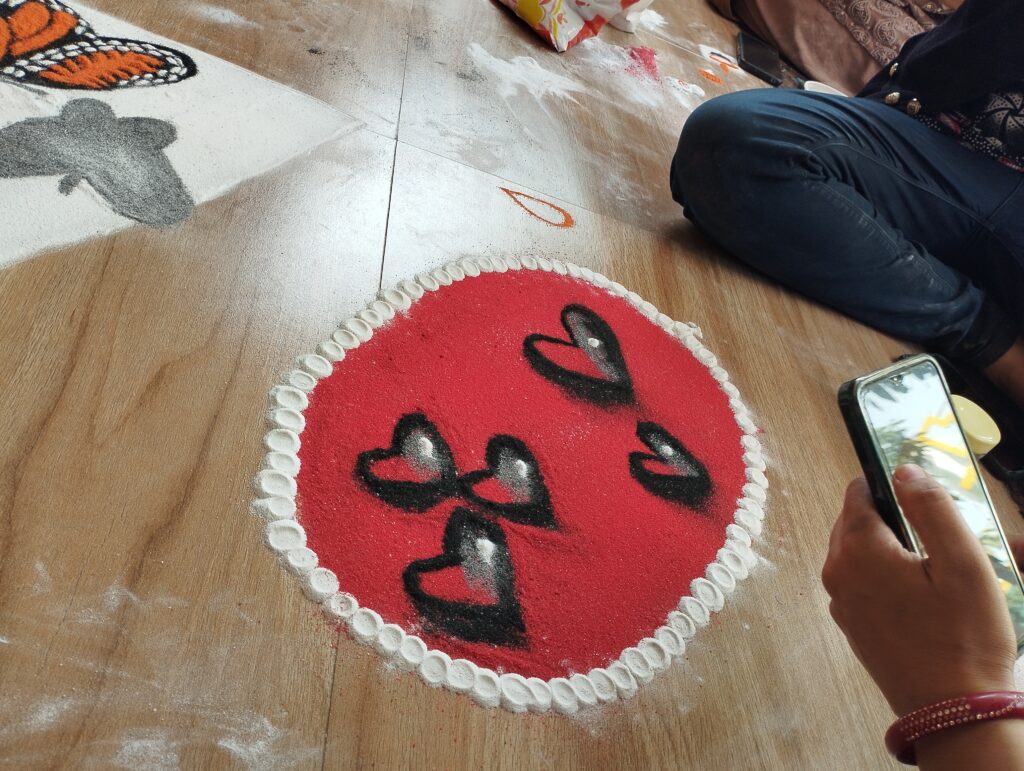The Artistic Evolution: 3D Rangoli


Rangoli, an ancient Indian art form, has been admired and practiced for centuries. It is a traditional decorative art that involves creating intricate patterns and designs on the ground using colorful powders, grains, or flowers. While traditional rangoli designs have their own charm, a new dimension has been added to this art form with the introduction of 3D rangoli designs. These stunning creations bring depth and life to the patterns, captivating viewers with their optical illusions and visual appeal.
Exploring the Essence of 3D Rangoli:
- Optical Illusions:
3D rangoli designs utilize depth perception and clever shading techniques to create illusions of three-dimensional forms. The designs appear to pop out of the ground, giving them a sense of depth and realism. This optical trickery adds a dynamic element to the traditional rangoli art, making it stand out and mesmerize onlookers.

- Enhancing Depth and Dimension:
By incorporating height, layers, and shadows, 3D rangoli designs transform a two-dimensional surface into a multidimensional masterpiece. These designs give the impression of depth, with certain elements seemingly floating above the ground. This added dimension elevates the visual impact of rangoli art, creating a sense of wonder and intrigue.

- Visual Extravaganza:
The vivid colors, intricate patterns, and optical illusions of 3D rangoli designs create a visual extravaganza that captivates the eye. The interplay of light and shadow, combined with the intricate details, makes these designs truly awe-inspiring. Each element of the design comes to life, enticing viewers to explore the artwork from different angles to fully appreciate its beauty.

Popularity of 3D Rangoli:
- Modern Twist to Tradition:
3D rangoli designs inject a modern twist into the traditional art form, making it appealing to a wider audience. While still rooted in ancient traditions, the incorporation of three-dimensional effects brings rangoli art into the contemporary era, attracting the attention of art enthusiasts and novices alike.

- Social Media Sensation:
The rise of social media platforms has played a significant role in popularizing 3D rangoli designs. These visually striking creations, often featuring intricate patterns and vibrant colors, are perfect for capturing attention and gaining popularity on platforms like Instagram, Pinterest, and Facebook. Sharing images and videos of 3D rangoli designs has become a trend, spreading the beauty and creativity of this art form across the globe.
- Festivals and Celebrations:
In India, rangoli plays an integral role in festivals and celebrations. During auspicious occasions like Diwali, Navratri, and Pongal, households adorn their entrances and courtyards with rangoli designs to welcome guests and bring good luck. The introduction of 3D rangoli designs has added an extra flair to these festive decorations, making them more visually appealing and enchanting.
- Bridging Art and Technology:
3D rangoli designs represent the fusion of traditional artistry with modern technology. Artists now utilize computer-generated designs, laser-cut stencils, and innovative materials to create intricate and precise 3D rangoli designs. This marriage of art and technology has widened the scope of rangoli art, attracting artists who are keen to experiment with new techniques and materials.
The advent of 3D rangoli designs has breathed new life into the age-old art form. With their optical illusions, enhanced depth, and visual extravaganza, these designs have captured the hearts of art enthusiasts and become a popular trend on social media. By blending tradition with innovation, 3D rangoli designs have ensured the preservation and evolution of this beautiful art form for generations to come. So, let us immerse ourselves in the captivating world of 3D rangoli and witness the magic unfold before our eyes.
